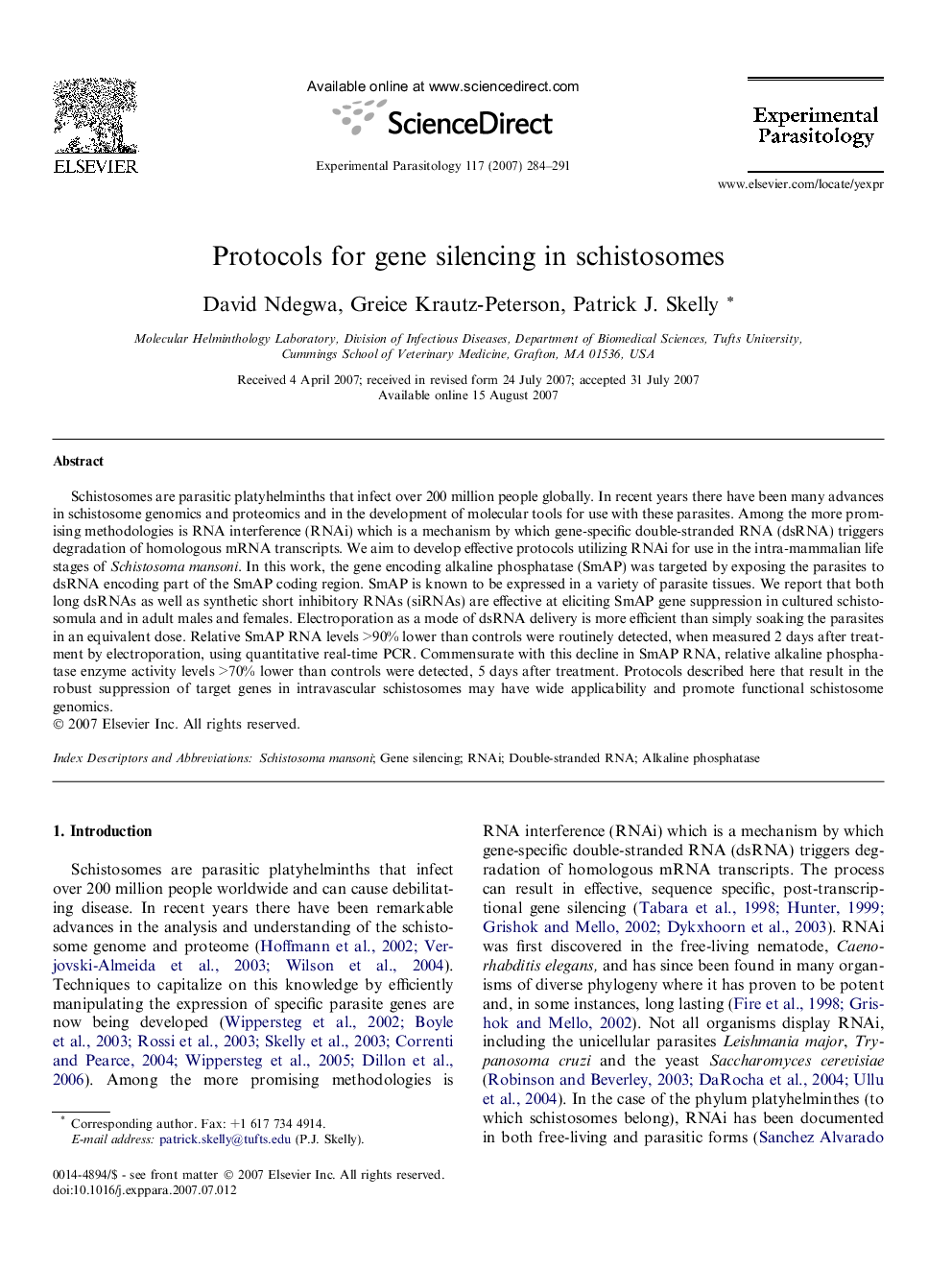| Article ID | Journal | Published Year | Pages | File Type |
|---|---|---|---|---|
| 4372000 | Experimental Parasitology | 2007 | 8 Pages |
Abstract
Schistosomes are parasitic platyhelminths that infect over 200 million people globally. In recent years there have been many advances in schistosome genomics and proteomics and in the development of molecular tools for use with these parasites. Among the more promising methodologies is RNA interference (RNAi) which is a mechanism by which gene-specific double-stranded RNA (dsRNA) triggers degradation of homologous mRNA transcripts. We aim to develop effective protocols utilizing RNAi for use in the intra-mammalian life stages of Schistosoma mansoni. In this work, the gene encoding alkaline phosphatase (SmAP) was targeted by exposing the parasites to dsRNA encoding part of the SmAP coding region. SmAP is known to be expressed in a variety of parasite tissues. We report that both long dsRNAs as well as synthetic short inhibitory RNAs (siRNAs) are effective at eliciting SmAP gene suppression in cultured schistosomula and in adult males and females. Electroporation as a mode of dsRNA delivery is more efficient than simply soaking the parasites in an equivalent dose. Relative SmAP RNA levels >90% lower than controls were routinely detected, when measured 2 days after treatment by electroporation, using quantitative real-time PCR. Commensurate with this decline in SmAP RNA, relative alkaline phosphatase enzyme activity levels >70% lower than controls were detected, 5 days after treatment. Protocols described here that result in the robust suppression of target genes in intravascular schistosomes may have wide applicability and promote functional schistosome genomics.
Related Topics
Life Sciences
Immunology and Microbiology
Parasitology
Authors
David Ndegwa, Greice Krautz-Peterson, Patrick J. Skelly,
